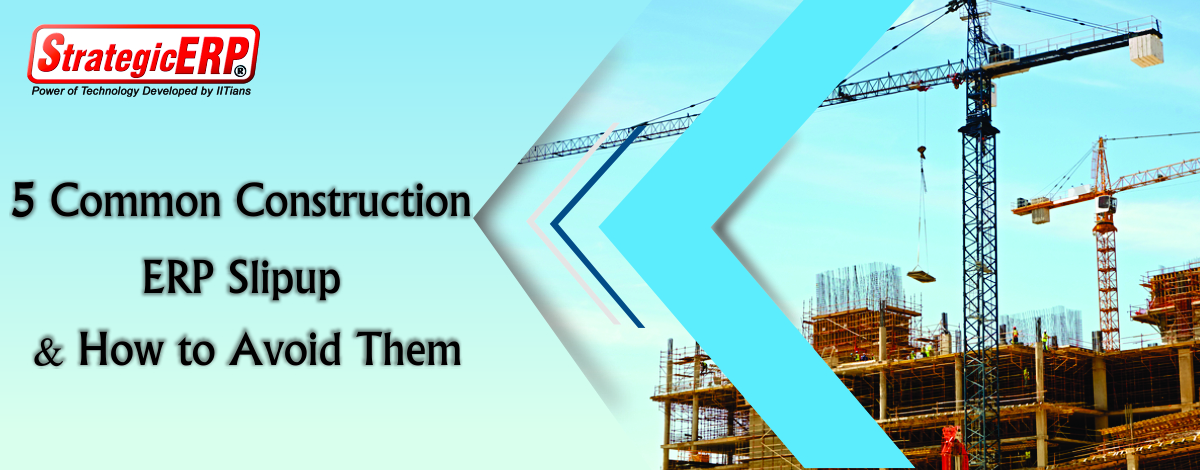5 Common Construction ERP Slipups and How to Avoid Them
Category : ERP
Blog posted by : Admin / 02 Jul, 2018
You must have already heard a number of times how an ERP implementation can bring in immense productivity and efficiency benefits for your construction business. Yes, it’s true that a construction ERP software has the potential to streamline your business, save costs, enable better interdepartmental communication and collaboration. On the flipside, however, poorly planned ERP rollout can add to the problems it is supposed to solve and severely cost organizations in terms of delays, loss of productivity and unexpected expenses.
Take a look at these 5 common pitfalls to avoid making your construction ERP solution implementation a success story:
1. Not analyzing your business properly: Before you embark on your construction ERP implementation, it is imperative that you closely analyze your business processes. It is very tempting to just take up the present process and automate it. Yes this will help things run faster but it won’t help you fully realize the potential of the construction ERP solution. The correct way to go about it is first analyzing your current business process, fixing the loopholes in it and then automating it with an ERP system.
2. Not doing due diligence before selecting the ERP vendor: Just like every other industry, construction business has its own unique challenges and requirements. When choosing an ERP solution it is always advisable to go for an industry-specific solution rather than choosing a horizontal ERP software. So, if you choose a specialized ERP solution targeted for construction business, you will get customized modules and benefit from more industry-specific features, which will in turn lead to faster RoI. Also, make sure to check the success rate of the vendor. It is always a great idea to take three-four references of construction companies whom you can contact to know more about the ERP software, its functionalities and after-sales services.
3 Not prioritizing: You must also have a clear understanding about the primary goals that you want to achieve with your construction ERP solution and then prioritize the processes that you want to move to the ERP solution first. Don’t try to implement the solution all at once, take small steps. Move the most business critical ones initially, involve end users, take their feedback, fix the gaps and then repeat with other processes.
4. Not planning for the time, budget and resources required: Carefully estimate the expenses, resources and man-hours required to carry-out the implementation. Many a time organizations that have tried to achieve more with less have failed miserably. The key is to carefully review and keep the estimate as close to accurate as possible to avoid delays and unrest among implementation teams.
5.Not paying attention to change management and training: An ERP implementation is not truly successful, unless it is being used by every department that has been moved to the system. In many companies, ERP implementation fails as employees reject the new system as they are not comfortable with it. Invest in training and encourage your employees to become familiar with the ERP system before it goes live. It is a good idea to impart training through other modes, such as videos and webinars, apart from traditional training. Encourage them to ask questions and clear their doubts. Remember, faster adoption and acceptance from the end-user is possibly the biggest way to measure the success of the construction ERP software.







